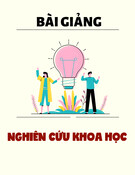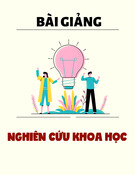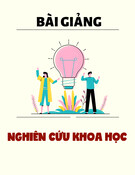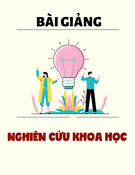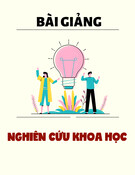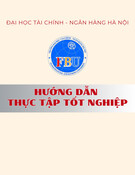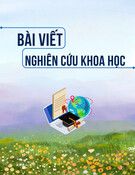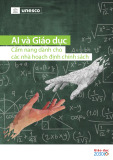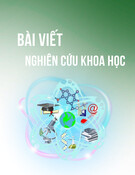
EURASIA Journal of Mathematics, Science and Technology Education, 2024, 20(7), em2477
ISSN:1305-8223 (online)
OPEN ACCESS Research Paper https://doi.org/10.29333/ejmste/14761
© 2024 by the authors; licensee Modestum. This article is an open access article distributed under the terms and conditions of
the Creative Commons Attribution License (http://creativecommons.org/licenses/by/4.0/).
albert.vilalta@uab.cat (*Correspondence) jordi.deulofeu@uab.cat laura.morera@innovamat.com
Enriching math teaching guides from a competency-based perspective
Albert Vilalta Riera 1* , Jordi Deulofeu Piquet 1 , Laura Morera Úbeda 2
1 Universitat Autònoma de Barcelona, Barcelona, SPAIN
2 Innovamat Education, Barcelona, SPAIN
Received 28 June 2023 ▪ Accepted 16 December 2023
Abstract
This study introduces a novel framework designed to enrich mathematics teaching guides from a
competency-based perspective. First, we narrow down the concept of a teaching guide in
mathematics education, grounded in the documentational approach to didactics. This definition
offers an updated perspective on the structure and function of math teaching guides in
educational settings. Second, we provide a comprehensive definition of ‘richness’ in math
activities, encompassing content, processes, cognitive demand, and classroom management.
Lastly, we introduce an analytical tool developed for assessing and enhancing the richness of math
teaching guides. This tool, formed through theoretical analysis and empirical testing, assists
educators and curriculum developers in creating more balanced and integrative teaching guides.
The results suggest that the tool holds potential for broader applications in curriculum design and
teacher education. The findings contribute to the broader understanding of how teaching guides
can effectively capture and communicate the richness of activities, thereby serving as a valuable
tool for improving mathematical education resources.
Keywords: mathematics education, teaching guides, competency-based education, curriculum
enrichment, instructional design, documentational approach to didactics
INTRODUCTION
The role of resources, documents and curriculum
design in education has been a subject of extensive
research, with researchers acknowledging their
importance in shaping learning experiences for both
students and teachers (Remillard, 2005; Trouche et al.,
2018). Particularly, teaching guides (as defined in our
theoretical framework), used by teachers to facilitate
activities, serve as a critical link between curriculum
design and classroom implementation. In fact, teaching
guides significantly influence teacher performance,
serving as both an operational tool for implementing
activities and providing classroom management advice,
and as a resource for continuous professional
development. Their pivotal role extends to curriculum
designers as well, constituting a primary means of
communication with teachers, who interact with these
guides on a weekly basis. Different authors have
explored various aspects of textbooks (Gueudet et al.,
2013) and teachers’ use of math curricula (Remillard,
2005), and even studied how teacher guides give support
to teachers (Jukić Matić & Glasnović Gracin, 2021).
Nevertheless, there remains a lack of a comprehensive
and specific definition of what constitutes a teaching
guide (opposed to a textbook or any other curriculum
resource). Such absence leaves room for varied
interpretations and can lead to inconsistencies in
research and teaching practices. This study starts by
proposing a concrete definition for teaching guides,
grounded in the documentational approach to didactics
(DAD) framework (Trouche et al., 2018).
The term rich math task is broadly used by math
teachers and experts (e.g., Math For Love, 2022),
curriculum designers (e.g., Gojak, 2017), governments
(e.g., Virginia Department of Education, 2023), and
prestigious math education institutions (e.g., Piggott,
2007). While analyzing math tasks and its quality is a
vast field of research (Margolinas, 2013), the definition of
richness, or enrichment, remains nebulous. Specifying
such definition with a comprehensive approach that
combines the main aspects of enrichment (both task and
management) to analyze and improve teaching guides
could be innovative.

Vilalta Riera et al. / Enriching math teaching guides from a competency-based perspective
2 / 18
Our research aims to fill these gaps by proposing a
novel framework for analyzing and enriching teaching
guides from a competency-based perspective (combing
ideas by de Lange’s 1999 works on cognitive demand,
Niss & Højgaard, 2019, and Schoenfeld's TRU-math,
2016). This framework integrates key dimensions of
enrichment, including content, processes, and class
management, offering a more holistic perspective on
guide evaluation and improvement. By doing so, we
hope to contribute to the ongoing discourse on math
guides design, providing educators and curriculum
designers with a solid tool to enhance the richness of
their guides.
To illustrate our approach, we draw upon a metaphor
likening activities to reality and guides to films. Just as a
film captures a fraction of the richness and complexity of
reality, a guide encapsulates a portion of the richness
inherent in an activity. This metaphor not only
underscores the complexity of activities and the relative
simplicity of guides, but also highlights the potential of
our framework to capture and communicate the richness
of activities when written in a guide format (i.e., as a
document).
In this context, our research question is: How can we
develop and apply a comprehensive framework that
integrates key dimensions of math enrichment to
effectively analyze and improve teaching guides?
In the following sections, we will delve deeper into
our framework, detailing its development, application,
and implications for guide enrichment. We will also
present a case study, where we apply our framework to
a guide from Innovamat’s curriculum (Vilalta, 2021),
providing a practical demonstration of its utility,
potential impact and limitations.
THEORETICAL FRAMEWORK
This study starts from DAD by Trouche et al. (2018),
exploring the complex relationship between teachers
and the resources they use in their teaching practice. This
understanding forms the foundation of our approach.
Within this context, we specifically focus on defining
and analyzing math teaching guides, which are distinct
from traditional textbooks. We consider the intrinsic
quality of these guides, their coherence, the tasks and the
class management they propose.
Secondly, we explore and define the concept of rich
math activities from a competency-based perspective,
drawing upon Niss and Højgaard’s (2019) definition of
mathematical competence, the characterization of a
powerful class by Schoenfeld’s (2016) TRU-math and de
Lange (1999) works on cognitive demand.
This framework guides our development of an
analytical tool designed to characterize the richness of
teaching guides, which will be discussed in the following
sections.
Meaning of Document
The term resource in educational environments can
refer to a wide variety of tools and formats. DAD is a
theoretical framework that allows for the analysis of the
complex relationship between teachers and these
resources. According to Trouche et al. (2018), a
mathematics curricular resource is ‘any resource (e.g.,
digital interactive, nondigital/traditional text) that are
developed and used by teachers and pupils in their
interaction with mathematics in/for teaching and
learning, inside and outside the classroom’ (p. 3).
They further elaborate by distinguishing between
material curriculum resources (e.g., textbooks, digital
resources, manipulatives, and calculators), social
resources (e.g., a conversation on social networks or in a
forum), and cognitive resources (e.g., any theoretical
framework used to work with teachers).
Teachers interact with these resources in what DAD
calls the scheme of use, which is different for each teacher,
depending on their experience and knowledge. A
scheme has four components:
(a) the objective of the teaching activity,
(b) the rules of action, information gathering, and
classroom control,
(c) operational invariants (propositions considered as
true and other relevant concepts), and
(d) possibilities for inference and adaptation to
various situations.
Thus, the combination of the resource and its scheme
of use generates the document, the cornerstone of DAD.
Contribution to the literature
• This study offers a novel definition of a teaching guide as a document, grounded in DAD framework
(Trouche et al., 2018), providing a fresh perspective on how guides can be conceptualized and studied.
• It identifies key traits of enrichment, drawing us closer to a comprehensive definition of richness in the
context of math teaching guides. These traits encompass content, processes, cognitive demand, and
management, among others, offering a multifaceted view of what constitutes a rich math guide.
• It presents the development and validation of a framework that facilitates the analysis and enrichment of
math teaching guides. This tool, with its robust theoretical underpinnings and practical utility, enhances
our ability to evaluate and improve the richness of math teaching guides.

EURASIA J Math Sci Tech Ed, 2024, 20(7), em2477
3 / 18
The interaction between a teacher and a resource is
bidirectional: the resource influences the teaching
practice (instrumentation process), while the teacher’s
knowledge conditions the use of the resource
(instrumentalization process). As an example, we can
imagine a teacher using a traditional textbook. Units and
proposed tasks deeply shape how this teacher is
teaching math in the class. At the same time, teacher’s
experience, knowledge and even classroom conditions
also transform how the textbook is used, whether tasks
are literally followed or not, whether learning goals are
modified or not, etc. This interaction results in a
dynamic, evolving process known as documentational
genesis. As Gueudet and Trouche (2009) describe,
A document developed from a set of resources
provides new resources, which can be involved in
a new set of resources, which will lead to a new
document etc. Because of this process, we speak of
the dialectical relationship between resources and
documents (p. 206)
Defining & Analyzing a Teaching Guide
This study aims to characterize richness from a
competency-based perspective in order to develop an
analytical tool that allows for the observation of teaching
guides from this viewpoint. Such a goal leads us to the
prior need of defining what traits constitute a teaching
guide, as opposed to other resources, especially
textbooks.
Usually, DAD understands textbooks as resources,
not documents, because they typically lack a scheme of
use. In contrast, a teaching guide (hereafter, guide) is not a
resource but rather a document. We can affirm that
because, apart from the tasks for each session, a guide
also details the objectives of the session, rules of action,
and some adaptations, key traits of a scheme of use
(Gueudet & Trouche, 2009).
As Remillard (2005, 2012, 2013) has explored, there
are resources that talk through the teacher (i.e., to the
students) and others that talk to the teacher. This
characteristic is what the author calls the ‘voice’ of the
resource. Here, we find a second key difference between
a textbook and a guide: while a textbook talks through
the teacher aiming the students, a guide talks to teachers.
This difference in the voice has implications in the
focus. A textbook typically explains content theory with
texts, diagrams, and drawings, as well as proposing
tasks to work on this theory. On the contrary, a guide is
more focused on describing the different tasks and
questions to be proposed to students, often with a
didactic justification, rather than just explaining the
theory. Additionally, it includes classroom management
tips, ranging from grouping proposals to
recommendations for addressing both struggling
students and talented ones.
Table 1 summarizes the three explored differences
between a textbook and a guide.
There are other aspects of curricular materials that
could be explored, like their visual aspect (what
Remillard, 2005, calls ‘look’), their structure, or other
communicative aspects. Nevertheless, we find them not
as relevant for the purpose of defining a guide and
exploring its richness from a competency-based
perspective.
As Jukić Matić and Glasnović Gracin (2021) claim,
‘compared to the research on textbooks, research on
teacher guides is sparse’ (p. 1). Moreover, most authors
(e.g., Ahl et al., 2015; Brown, 2009; Jukić Matić &
Glasnović Gracin, 2021) focus on the teacher-guide
interaction (i.e., when the teacher is using the guide),
rather than analyzing the richness of the guides itself. In
any case, although the differences between what is
understood as a textbook and what is considered a guide
are evident, they also present certain similarities that
make much of the research done around textbooks
applicable.
The first thing to keep in mind, as also argued by
Shield and Dole (2012), is that the analysis of a textbook
(like the analysis of a guide) can only inform about its
potential to generate learning, since its use depends on
the teacher. Therefore, some authors, such as Trouche et
al. (2013), begin their analyses by explaining that the
intrinsic quality of a resource must be distinguished from
its adequacy and subsequent use. This intrinsic quality
encompasses mathematical, didactic, and user
experience aspects.
Gueudet et al. (2013) also discuss the conceptual
coherence of the textbook, which can be applied to a guide
too. According to the authors, this can be understood as
a combination of the correctness of mathematical
content, alignment with the official curriculum,
appropriate sequencing of concepts, and the correct
relationship between the content covered and the tasks
proposed.
Other models for analyzing traditional textbooks
(Valverde et al., 2002) are based on three aspects: content
(number, geometry, etc.); performance expectations
(using routine procedures, solving problems, etc.); and
perspective (attitudes, participation, interest, habits,
Table 1. Key differences between a textbook & a teaching guide
Point of view
Textbook
Teaching guide
1
DAD
Resource
Document (resource with a scheme of use)
2
Voice
Through teachers
To teachers
3
Focus
Content & tasks
Tasks, questions and management (i.e., activities)

Vilalta Riera et al. / Enriching math teaching guides from a competency-based perspective
4 / 18
etc.). As Gueudet et al. (2013) explain, though, most of
these analyses focus on tasks and problem-solving
procedures (Fan & Zhu, 2007; Zhu & Fan, 2006),
procedural complexity (Vincent & Stacey, 2008),
cognitive demand (Jones & Tarr, 2007) and depth of
understanding in terms of making connections, as
described by Pepin (2008). It is difficult to find analysis
that explore richness from a complete competency-based
perspective (as defined in the following section), mainly
because textbooks tend to consider only content, rather
than math processes, competencies and class
management. In fact, problem-solving, connections or
cognitive demand are, as we will see below, aspects to
consider when talking about competency-based
richness, but others that we consider relevant are
missing, such as processes like ‘reasoning and proof’ or
‘communication and representation’ (as described by
National Council of Teachers of Mathematics [NCTM],
2000) and, above all, classroom management
considerations (one of the key differences between a
textbook and a guide).
We propose, therefore, to bring together several of
these ideas in a framework that allows for the
characterization of the potential competency-based
richness (i.e., intrinsic quality) of a document (a resource
with a schema of use) such as a guide formed by
activities.
Rich Math Activities from a Competency-based
Perspective
The expression rich math task is a phrase commonly
employed across various spheres of the educational
sector. Teachers and experts in the field, such as Finkel
(Math For Love, 2022), have embraced this terminology:
‘Every student deserves to have the opportunity to
problem-solve and engage in genuine mathematical
thinking. Rich tasks are designed to make these rich
learning experiences possible.’ Similarly, curriculum
developers such as Gojak (2017) also use the term: ‘A rich
task presents a high level of cognitive demand and
requires students to think abstractly in order to make
connections to and among mathematical concepts’ (p. 3).
Governmental bodies like the Virginia Department of
Education (2023) describe it too: ‘Rich mathematical
tasks engage students in sense-making through deeper
learning that require high levels of thinking, reasoning,
and problem solving’. Furthermore, esteemed academic
institutions like Cambridge University (Piggott, 2007,
2011), also reference this term. Despite its widespread
use, the precise meaning of what constitutes ‘richness’ in
mathematics education is still somewhat elusive. While
analyzing math tasks and its quality is a vast field of
research (Margolinas, 2013), ‘richness’ remains rather
unexplored from a research point of view.
Before diving into that, though, we need to agree on
what a task is. According to the authors of the ICMI 22
monograph on task design, edited by Margolinas (2013),
the concept of task has been used with different
meanings over the years. For Leont’ev (1975), one of the
pioneers in the use of the term, a task is any operation
performed under specific conditions. The same authors
of the monograph, however, use the term in a very broad
way:
We use task to mean a wider range of ‘things to
do’ than this, and include repetitive exercises,
constructing objects, exemplifying definitions,
solving single-stage and multi-stage problems,
deciding between two possibilities, or carrying
out an experiment or investigation. Indeed, a task
is anything that a teacher uses to demonstrate
mathematics, to pursue interactively with
students, or to ask students to do something.
Tasks can also be anything that students decide to
do for themselves in a particular situation. Tasks,
therefore, are the mediating tools for teaching and
learning mathematics and the central issues are
how tasks relate to learning, and how tasks are
used pedagogically (Margolinas, 2013, p. 9-10).
Other authors, such as Christiansen and Walther
(1986) or Mason and Johnston-Wilder (2006), advocate
for a more limited definition, similar to the one used by
Vilalta et al. (2021), defining task as what is asked to the
students, while activity refers to the interaction between
students, teachers, resources, and the environment
surrounding the task. In our work, we adopt this more
concrete definition: a task is the premise, the statement,
the demand made to students. A task, or a set of tasks,
combined with the management by the teacher as they
interact with the students, is what we understand as
activity, which can be richer or less.
Activity = Tasks (demands for students) +
management (interactions).
(1)
When considering this equation, it is hard not to
establish parallels between a document (understood as
the sum of a resource and a usage scheme) and an activity
(the sum of one or more tasks and their management):
we could argue that any task can be understood as a
specific type of resource, and that its management is
precisely the scheme of how this resource is used. This
parallelism is especially relevant for our work, because
it strengthens the conception of guides (formed by
activities) as documents.
Once we have agreed that task and management are
the two ingredients of an activity (and therefore, of a
guide made of activities), it is appropriate to describe
traits that characterize its richness. The aforementioned
author, Piggott (2007, 2011), within the framework of the
NRICH project at Cambridge, proposes a practical
framework to approach richness. It includes two factors:
content and teaching. According to Piggott, rich activities
require, on the one hand, content based on appealing

EURASIA J Math Sci Tech Ed, 2024, 20(7), em2477
5 / 18
problems that foster the development and use of
strategies and mathematical thinking; and, on the other
hand, a teaching approach (i.e., classroom management)
that encourages an open and flexible environment in
which cooperative work, exploration, and
communication are promoted and where difference is
used as a learning tool. The two factors described by
Piggott have a clear relationship with the two elements
of a rich mathematical activity described by Vilalta et al.
(2021) based on Deulofeu and Vila (2021): the task and
its management. This is why the analysis of richness
makes much more sense when talking about teaching
guides because, unlike textbooks, these include
classroom management recommendations.
To analyze this ‘development and use of strategies
and mathematical thinking’ referred by Piggott, we
propose to start with what the literature says about
‘learning mathematics with understanding’ (Hart and
Team, 1981). According to Hiebert et al. (1997), students
construct understanding by ‘reflecting and
communicating’, so rich tasks must promote these
processes:
First, the tasks must allow the students to treat the
situations as problematic, as something they need
to think about rather than as a prescription they
need to follow. Second, what is problematic about
the task should be the mathematics rather than
other aspects of the situation. Finally, in order for
students to work seriously on the task, it must
offer students the chance to use skills and
knowledge they already possess. Tasks that fit
these criteria are tasks that can leave behind
something of mathematical value for students (p.
8).
What in the eighties was called learning with
understanding could now be understood as developing
mathematical competence. Thus, following the ideas of the
PISA theoretical framework (Niss & Højgaard, 2019;
Organization for Economic Co-operation and
Development [OECD], 2017a) and the process standards
defined by NCTM (2000), we understand that
mathematical competence consists of four processes:
problem-solving; reasoning and proof; connections;
communication and representation. These processes,
widely discussed and accepted by the math education
community, structure mathematical work beyond
content and give it meaning. Although each territory
interprets them differently in their official curricula,
leading to small variations, different countries such as
the United States (National Governors Association
Center for Best Practices, & Council of Chief State School
Officers, 2010), Australia (Australian Curriculum,
Assessment and Reporting Authority [ACARA], 2015),
Hong Kong (The Curriculum Development Council of
Honk Kong, 2017) or Spain (LOMLOE, 2020), among
others (Thompson et al., 2018) are already adopting a
competency-based conception of mathematics. It is not
the objective of this article to delve into the causes of this
conception or to discuss it. In any case, thanks to the
processes of mathematical competence, we can
characterize a first indicator of richness: the task must
provide opportunities to develop one or more of these
mathematical processes. It is hard not to observe
parallels between this process-based conception of math
with some of the aspects to analyze a textbook exposed
in the previous section: for instance, Valverde et al.
(2002) talk about performance expectations, and they
distinguish using routine procedures from solving
problems; Fan and Zhu (2007) and Zhu and Fan (2006)
focus on tasks and problem-solving procedures; Pepin
(2008) conceives understanding in terms of making
connections.
At the same time that we highlight the importance of
working on processes, we cannot ignore the content. A
second indicator of richness is found, as described by
Deulofeu and Vila (2021) within the mathematical
content involved in the task. According to the authors,
this must be contextualized (relevant to the student),
rigorous (correct, with mathematical sense and in
accordance with the curriculum), and extensible
(connected to prior and future knowledge). Again, all
three ideas are directly related to Gueudet et al.’s (2013)
‘conceptual coherence’ when analyzing a textbook:
correctness, alignment with the curriculum, and
sequence. Valverde et al. (2002) also consider content as
a key aspect to analyze in a textbook.
Other authors do not literally speak of richness, but
they also describe indicators to enrich mathematical
activity in the classroom. According to TRU-math
(teaching for robust understanding) by Schoenfeld
(2016), the five dimensions of a powerful class are: the
content; the cognitive demand; the equitable access to content;
the agency, ownership and identity; and the formative
assessment. Although these dimensions refer to a class,
many of the ideas presented by Schoenfeld (2016) are
very useful when it comes to complementing the
analysis of the richness of a document, such as a guide,
both in terms of the task (resource) and its management
(scheme of use).
Without going any further, the first dimension speaks
of the content, which must ‘provide opportunities for
students to become knowledgeable, flexible, and
resourceful disciplinary thinkers’ (p. 4). We can see that
the author is including competency-based ideas (i.e.,
‘resourceful disciplinary thinkers’) into his
understanding of content. Since the conceptualization of
the present approach to richness comes from a
competency-based perspective, for analytical purposes
we prefer to separate the processes (problem-solving;
reasoning and proof; connections; communication and
representation) from the specific math content blocks
(numbers and operations; space and shape;
measurement; statistics and probability; change and

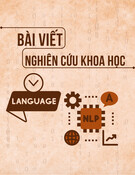
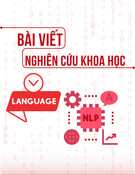
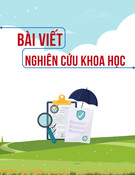
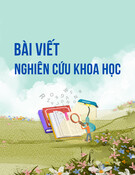
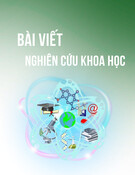
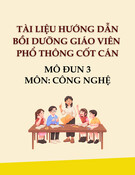
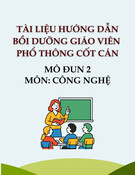
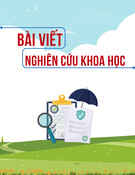
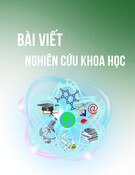
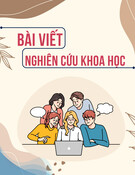
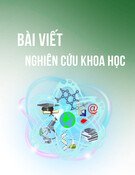
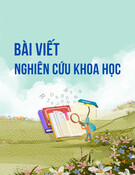
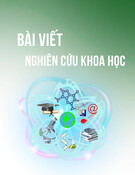
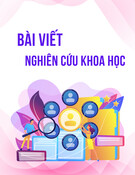
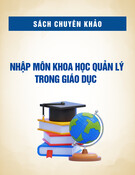
![Định hướng giáo dục STEM trong trường trung học: Tài liệu [chuẩn/mới nhất]](https://cdn.tailieu.vn/images/document/thumbnail/2025/20251124/dbui65015@gmail.com/135x160/25561764038505.jpg)
